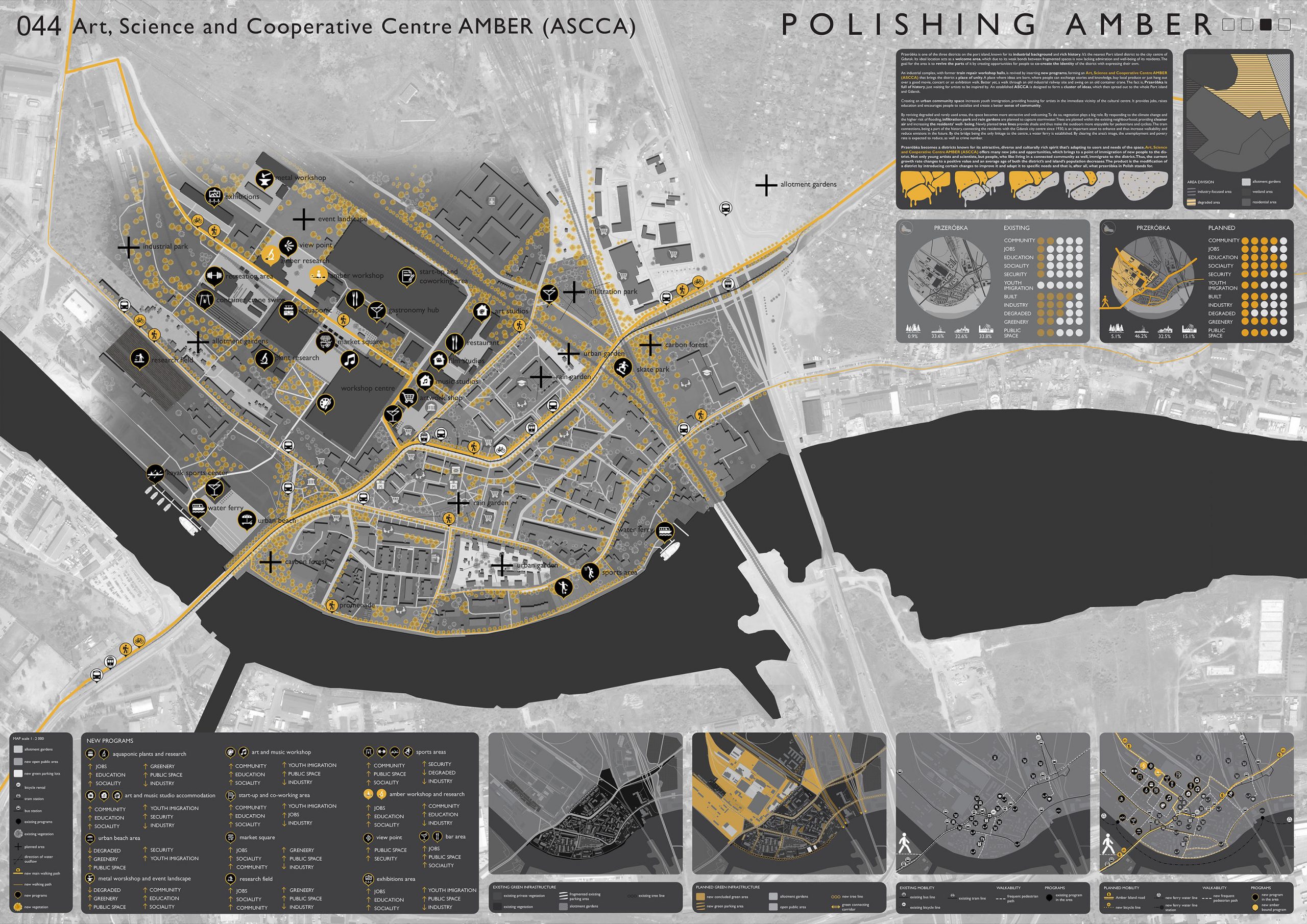LE:NOTRE Student Competition: The Port Island of the Future

This year’s LE:NOTRE student competition was about proposing a vision for an art-driven revitalization of the Gdańsk Harbor Island in Poland.
Billboard
Skyscrapper
Halfpage
This year’s LE:NOTRE Student Competition invited students to propose a vision for an art-driven revitalisation and a spatial and cultural integration of the Port Island of Gdańsk in Poland. The participants were asked to develop innovative ideas for landscape and green infrastructure in order to increase interest in this area for both: the citizens of Gdańsk and also for tourists. The award ceremony of the competition took place on April 21, 2021 during the digital launch event of the 2021 Gdańsk Landscape Forum, which will eventually be held on site from October 13 to 17, 2021. The first prize goes to a team of the University of Ljubljana, Slovenia.
Since the 10th Landscape Forum will be hosted by the Gdańsk Academy of Fine Arts, the focus of the student competition was on exploring the role of the arts in sustainable landscape development. ‘Transforming Cityscapes with Art’ is the guiding motive, applied to the complex coastal agglomeration of Gdańsk. One can find all relevant landscape issues in the coastal agglomeration of Gdańsk: landscape integrity versus landscape fragmentation, global maritime economy versus local economy, grey infrastructure versus green infrastructure, urban sprawl versus density, gentrification versus inclusion, sea versus land, nature versus industry, past narratives versus today’s realities.
Why Gdańsk?
Sprawling on the southern Baltic coast, the thousand-year old city of Gdańsk shines at the edge of the alluvial delta area of the Vistula River and post-glacial moraines with streams and extensive forest complexes. It is the capital and largest city of the Pomeranian Voivodeship and – together with the nearby cities of Sopot and Gdynia – one of the most prominent urban areas within the cultural and geographical region of Kashubia in Poland. Nature and culture are inextricably connected to each other here, constituting an important characteristic of the local landscape / cityscape.
Rediscovering the distinct architectural language
However, this mixed creation needs to be better emphasised, nurtured and designed. The city struggles to rediscover its distinct architectural language that could build a local identity. Furthermore, it includes large degraded areas or monofunctional special purpose zones along with over-sized structures and systems for transporting people and goods that have distinct stressful environmental repercussions. Finally yet importantly, a large part of the city is located in low-lying areas. Rising sea levels, backflow from seawater and more frequent heavy rains along with overstretched pumping stations constitute a significant threat to the city.
Port Island
Port Island, Wyspa Stogi or Wyspa Portowa in Polish, belongs to the Gdańsk Bay and is located right in the north of the City of Gdańsk. The name refers to the northern harbour that has emerged since the 1970s. The former German toponym Nehrung means in English spit. This is a landform made of sand sediments and very typical of the Baltic Sea. The island includes two relevant heritage sites: the Westerplatte peninsula with the World War II memorial and the old fortress Twierdza Wisłoujście, which is today a Natura 2000 site protecting amongst others a significant bats population.
The island covers about 26.4 km² at a length of around 8 km. It faces the Baltic Sea to the north and is bordered on all other sides by arms of the Vistula, in the west and south by the so-called Dead Vistula (Martwą Wisłą) and in the east the by the so-called Bold Vistula (Wisłą Śmiałą). The eastern border of the island was created around 1840 after a flood during which the river broke through the dunes. This area is also under Natura 2000 protection status. Various large lakes can be found on the island as well as coastal woodlands and dunes, especially in the eastern parts.
The Winners of the LE:NOTRE Student Competition
First Prize: University of Ljubljana, Slovenia – “Polishing Amber”
Medium Rectangle
Halfpage
“A stronger bond between the fossilized diverse landscapes needs to be established, in order to enhance the island’s initial appearance and make it more resistent to external factors.
The proposed revitalisation process includes a green infrastructure plan that not only cleans the port industry air pollutants, but also passes in patches throughout the island. Additionally blurring the strongly expressed land use boundaries and creating passages to maintain a unique coastal wildlife biodiversity with benefits of fighting climate change at the same time. Achieving the goal with infiltration parks, rain gardens, carbon forests and nature parks is beneficial for the well-being of the inhabitants. It increases as the new recreational trail is proposed that allows the users to fully experience hidden parts of the island.
With a newly established Art, Science and Cooperative Centre AMBER, new jobs and opportunities arise on the island and with sustainbale, frequenz and reliable water ferry routes it is even better accessible for the residents from Gdansk as well. Creating a diverse, culturally rich core in Przeróbka raises interest, employability and immigration, especially among young artists and families, which impacts the local and tri-city level.”
























